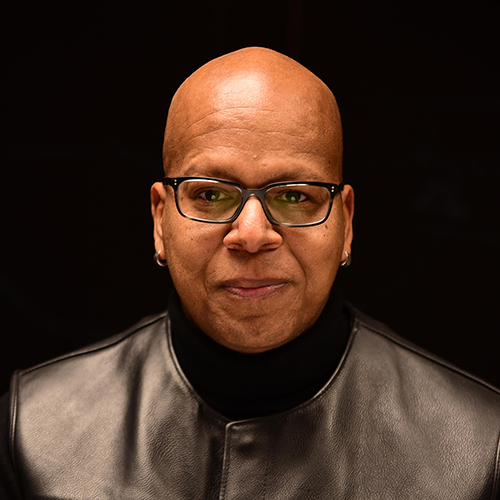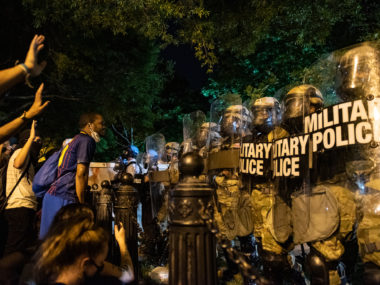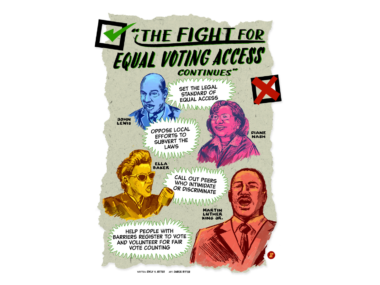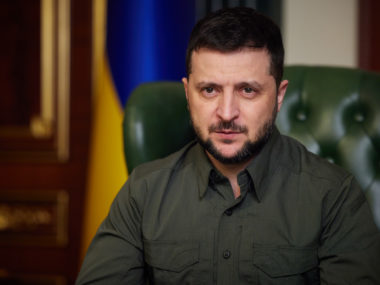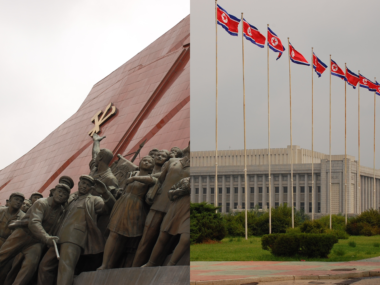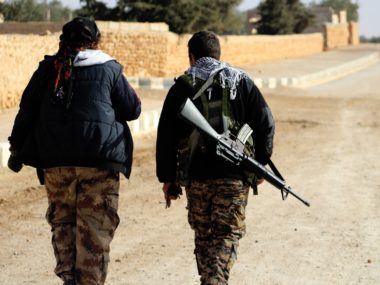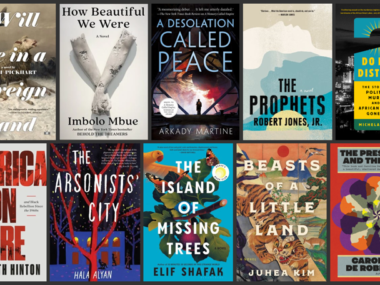2022 was the 10th anniversary of Political Violence At A Glance. Though the world has witnessed dramatic changes—from the Jan. 6 capitol insurrection, to Russia’s invasion of Ukraine, and the rise of populist nationalism around the world—the blog has continued to answer questions on the most pressing problems related to violence and protest in the world’s conflict zones, using rigorous research and simple, straight-forward analysis. Today, we present some of the favorite posts of contributors past and present. Wishing you and yours happy holidays, and we look forward to a hopeful 2023.
Navin Bapat
Juneteenth 2.0—Or Putting Black Folk Back into Their Emancipation
The post is both incisive and informative, but a message that comes out of it that needs to be repeated again and again is the statement, “one has international subversion of governments by economic actors, forced abduction, human trafficking, mass torture, mass rape, state, and non-state political domination to subjugate African Americans, state and non-state propaganda to diffuse the ideas of racial superiority and hatred, anti-enslavement mobilization and action, (internationalized) civil war, war crimes, and eventually law-making extending rights to those who had none as well as (alternatively) expanding or creating a democratic government. This is political conflict and violence at its core.” The vast majority of Western IR scholars do not see these dynamics in their own states, so I think it is essential that Christian Davenport reminds us again about the foundations of these governments. When we understand that, and see this perspective, events that seem shocking like January 6 make much more sense, and we understand that human security as opposed to state security should be a core part of the discipline.
Kyle Beardsley
An Illustrated Glossary of Political Violence
I really love the Illustrated Glossary of Political Violence. This is a clever, thoughtful, and appealing presentation of important concepts that often get conflated and confused in public-facing dialogue and even in published research.
Marie Berry
Wakanda Afrofuturism, and Decolonizing International Relations Scholarship
Alex Braithwaite
The Politics of Closing Refugee Camps
A couple of things stood out to me. In the piece, Beth offers a really sharp take on what was at the time a growing trend in which refugee-hosting governments were looking to extract value from their practices of hosting refugees. She used the case of Kenya and its on-again, off-again threats to close camps housing Somali refugees. But she also did a great job of demonstrating how common this kind of practice had become, especially at a time when European countries were panicked about rising numbers of refugees heading toward their borders. Ultimately, I remember this post as one that I wish I had thought to write at the time.
Dawn Brancati
Is the US Headed Toward Civil War
This piece discusses the United States’ vulnerability to civil war given the role of “ethnic entrepreneurs and social media, among others.
Male Victimhood in Armed Conflict
While most gender-based violence research focuses on women, this article looks at how violence against men is overlooked due to language and underreporting.
Has ISIS Made Gains as a Result of the Pandemic?
This post demonstrates how COVID-19 lockdown measures reduced ISIS violence by depleting the groups’ resources, reducing high-value civilian targets, and logistically making it more difficult to operate by eliminating cover.
Christian Davenport
Researching While Black: Why Conflict Research Needs More African Americans (Maybe)
There was nothing, and is nothing, quite like this piece. Most of us do not think about what things would be like if someone else (especially a Black version of you) examined the very same topic. This piece pushed us to think about research counterfactuals in a very different way, making us wonder what we actually know and could know. It also shifts the whole inclusion for inclusivity sake argument. From this piece, we come to realize that we need to include certain folks because it would lead to not only better demographics and equality (symbolically) but also better science and understanding (substantively).
Does Democracy Constrain Rulers or Pacify Dissidents
I like this piece because it challenges us to think very closely about something that has come to be viewed as very well-established—(domestic) democratic peace. Now, one might be surprised about my liking it because they call into question something that I have been quite connected with establishing but this is why I like it. Nothing is sacred in our profession. All things should be probed and questioned. The authors also do this probing and questioning with respect to both the past as well as the future. Not all such efforts are done with such grace and kindness.
Cullen Hendrix
Other Peoples’ Wars
This piece is fascinating. It tells the stories of two Brazilian fighters who went to combat ISIS in Syria as volunteers. In it, Mayara Santos Bueno and Joe Young do a masterful job of comparing and contrasting the personal narratives of the combatants with broader social scientific perspectives on why people choose to fight in “other peoples’ wars.” Truly a riveting read.
Aila Matanock
Militarization of Police
I like and refer to this piece in classes because Lindsay Cohn very effectively overviews what we know, as well as what we still need to learn, about the militarization of the police. Militarization has been painted as at times crucial to security order in general… but it has also been the subject of many of the police reforms currently under discussion. This piece centrally engages with critical conversations now happening in many countries including the US.
Brian Phillips
Did Banning Assault Weapons Affect Mass Shootings?
I wrote this post after a 2017 mass shooting that killed 26 people. Unfortunately, the post seems to be frequently relevant.
Emily Ritter
Five Ways Art and War Are Related
Art of all different media is an incredibly powerful communication tool (I tend to use it myself). It conveys explicit messages and ideas and more subtle turns of attitudes. Pairing visuals or music with text enhances its value through shock, repulsion, fear, passion, adoration… no wonder people fight about it, over it, and with it. This post from Dawn Brancati makes simple points that make me see so many more facets of how art both affects and is affected by conflict and violence. It’s a cohesive, insightful piece that makes me view art just a little differently these days.
Idean Salehyan
Looking Back at 9/11
This post was meaningful to me because 9/11 was a pivotal moment in my own life and also led to a major shift in academic research in international relations and comparative politics. It was nice to read how 9/11 shaped the work and worldviews of so many of my colleagues and friends, and to learn about people’s diverse reactions to this tragedy.
Barbara Walter
Why My German-Born Dad Is Terrified of Trump
This is my very favorite post for three reasons: First, it was a personal and poignant story about my dad. Second, it gave a non-native citizen’s perspective on the threats to America’s democracy that Americans were not seeing in January 2016. Third, it revealed that most Americans (myself included) had a false belief that our democratic institutions were stronger than they actually were. We know how the Trump story evolved and my dad was right; I was wrong.
Why Civil Wars Have Become Longer, Bloodier, and More Numerous
This post pointed out three big new patterns in civil wars that are likely to be happening, in part, because of the rise of social media. We are just starting to see the many negative societal implications of this new information environment and it is a phenomenon we need to understand.
Why Assad Will Fight to the Death
This was written in 2012 in the early months of the civil war that is still ongoing. I like this post because it reveals the power of good social science—it told us that a negotiated settlement to this war was unlikely for very specific reasons.
Joseph Young
How Can We Know When Popular Movements Are Winning? Look to These Four Trends
Erica’s post demonstrates the connection between good scholarship and effective communication. It is practical and the kind of thing you could give someone who wants a primer on the success of social movements, as well as something you could assign for a graduate course.
Why Civil Wars Have Gotten Longer, Bloodier, and More Numerous
This is another post that exemplifies what we hope to achieve on Political Violence At A Glance. Barb uses her incredible knowledge of civil wars to explain why they are becoming more awful. It again could be assigned in a course on civil wars but is digestible to the casual reader.
After the Violence: Three Things We Know About the Effects of War Trauma and What We Can Do About It
Thomas’ post synthesizes a great deal of research but relates it all back to an extremely important topic—maybe the most important topic we deal with: how political violence affects us and what we can expect from exposure to violence.
An Illustrated Glossary of Political Violence
Visually, this is by far our best post. Christian Davenport and Emily Ritter are two of the most creative thinkers when it comes to understanding repression combine this with amazing graphics, this may be my personal favorite.
Thomas Zeitzoff
An Illustrated Glossary of Political Violence
I loved this post. Ritter, Davenport, and the amazing art by Sequential Potential do something incredible. They define key terms of political violence in simple and precise ways, with eye-catching drawings.







